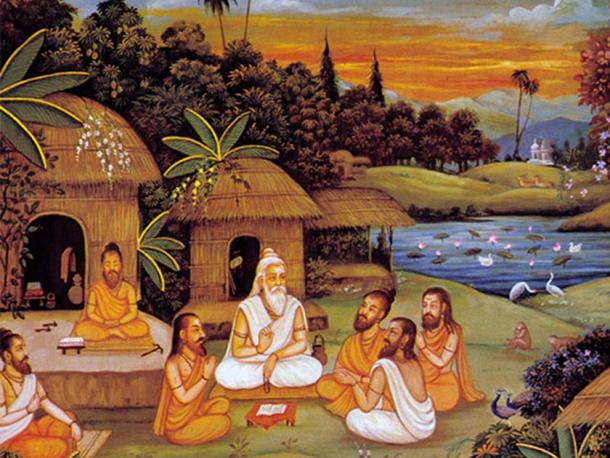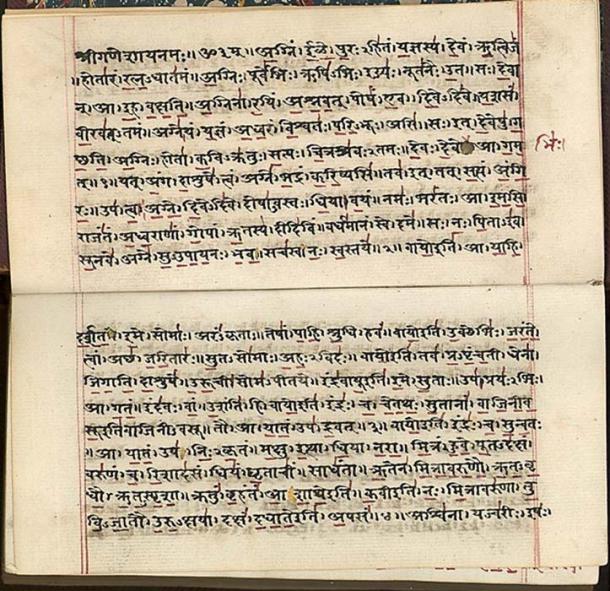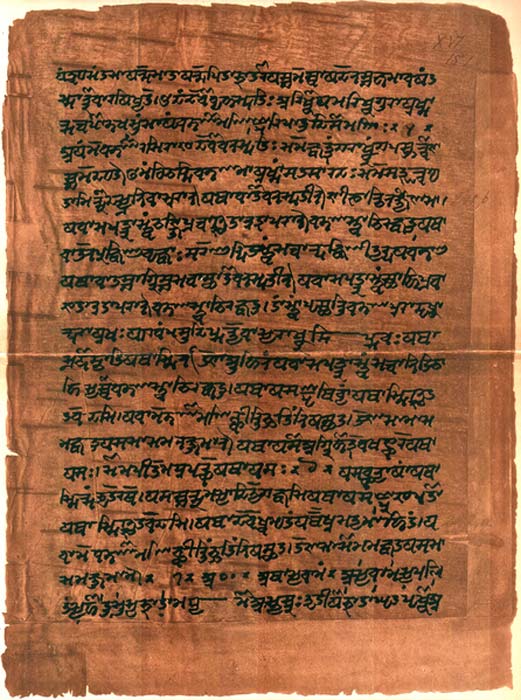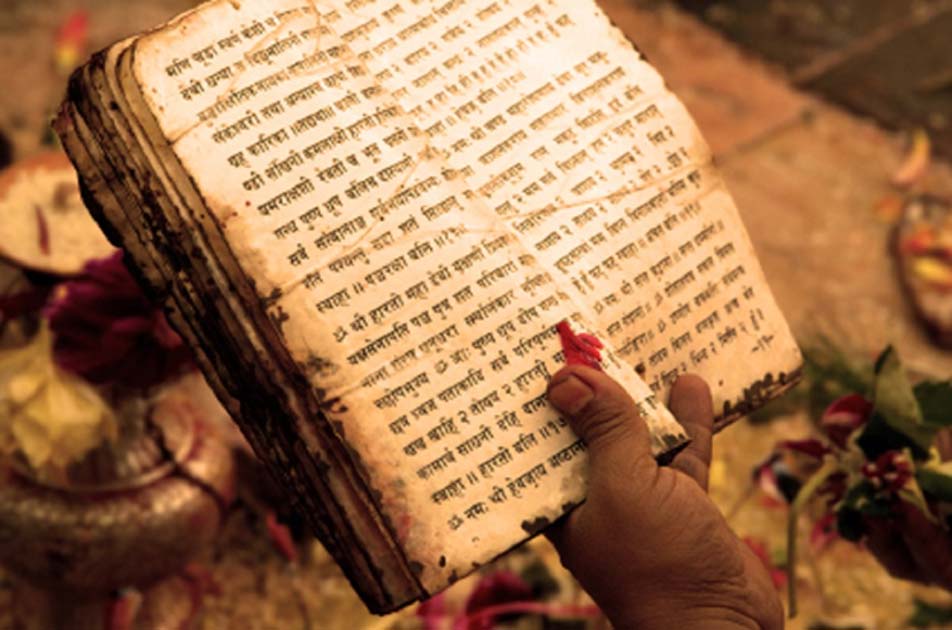Ancients - The Vedas: Ancient Mystical Texts Offer Charms, Incantations, Mythological Accounts and Formulas for Enlightenment
The Vedas are the sacred scriptures of Hinduism and are regarded as the oldest religious texts in the world. Thought to have been composed at least 3,500 years ago, the Vedas are a collection of hymns, magical incantations, dramatic mythological accounts, and sacred formulas for enlightenment.
There are Four Vedas (the Rig Veda, the Sama Veda, Yajur Veda and Atharva Veda), each of which may be further subdivided into four parts – the Samhitas (hymns), the Brahmanas (rituals), the Aranyakas (theologies) and the Upanishads (philosophies).
Who was the Messenger?
Whilst it is not entirely clear as to who wrote the Vedas, it is actually a non-question, as the focus has been traditionally placed on the message, rather than on the messenger. Some believe that the Vedas were given directly to the sages from God, and then passed down by word of mouth until it was finally codified and written down several hundred years later. Others, on the other hand, believe that the Vedas were revealed by the sages themselves.
- Colony Earth: Science in The Vedas - Part 1
- Speakers at Science Congress says ancient India mastered advanced space flight thousands of years ago
- Did the mythical Saraswati river of the ancient Vedas really exist?

Some believe the Vedas were passed to sages by God, while others believe the messages came from the sages themselves. (Non-random-Thoughts)
Rig Veda – Knowledge of the Hymns of Praise
The oldest of the four Vedas is the Rig Veda, which means ‘Knowledge of the Hymns of Praise’. It is also regarded as the most important Veda, and has contributed greatly to the other three sets of texts. The Rig Veda consists of 1028 hymns divided into 10 books called mandalas, and is used for recitation.
The Rig Veda is an important source for Vedic history, and many significant hymns, such as the Purusha sukta, which gives a description of the spiritual unity of the universe, and the Nasadiya sukta, which is also known as the ‘Hymn of Creation’.

Rig Veda (padapatha) manuscript in Devanagari, early 19th century. (Public Domain)
Sama Veda – Knowledge of the Melodies
The Sama Veda (‘Knowledge of the Melodies’) is used for chanting, and is composed almost entirely of verses from the Rig Veda. The fundamental difference between these two Vedas is that the verses from the Rig Veda are arranged in a different way in the Sama Veda, so as to facilitate its purpose of being chanted at the Vedic sacrifices.
Yajur Veda – Knowledge of Sacrificial Formulas
Yajur Veda means ‘Knowledge of the Sacrificial Formulas’, and contains explanatory prose commentaries on the way religious rites and sacrifices are to be performed. In other words, it functions as a liturgical handbook for priests. This Veda is divided into two parts, the White Yajur Veda and the Black Yajur Veda. According to one source, this Veda is said to be similar in function to the ancient Egyptian Book of the Dead.
- The Anu and Ancient Seers in the Rig Veda
- Ayurvedic Medicine: A Traditional Knowledge of Life from India that Has Endured the Passage of Time
- When Kalki the Destroyer Descends: Greed, Corruption, War, Destruction, and the Apocalypse

The Yajur Veda sets out how religious rites and ceremonies are performed. (CC by SA 3.0)
Atharva Veda – Knowledge of the Magic Formulas
The last (and youngest) of the four Vedas in the Atharva Veda, which means ‘Knowledge of the Magic Formulas’. This Veda is named after a group of priests, and is quite different from the three preceding groups of texts. The Atharva Veda is more folkloristic in style, and consists of charms, spells, and magical incantations. These include those aimed at attracting lovers, causing or preventing harm, and protecting against diseases and death. This Veda is considered by some as not belonging to the Vedas at all, though it has been noted that with regards to the study of Vedic history and sociology, it is next in importance to the Rig Veda.

Image of Codex Cashmiriensis folio 187a from Atharva-Veda Saṁhitā. (Public Domain)
Whilst the Vedas are best known as a source of spiritual knowledge, they are also significant for the material knowledge they contain. The Vedas are recognised as having made much contribution to modern knowledge. For example, in the field of mathematics, the concepts of zero, infinity, as well as the decimal system have been found in the Vedas. Moreover, some of the material knowledge from the Vedas have been confirmed by modern science. These include Vedic cosmology and the use of mantras to enhance the overall well-being of an individual.

No comments:
Post a Comment